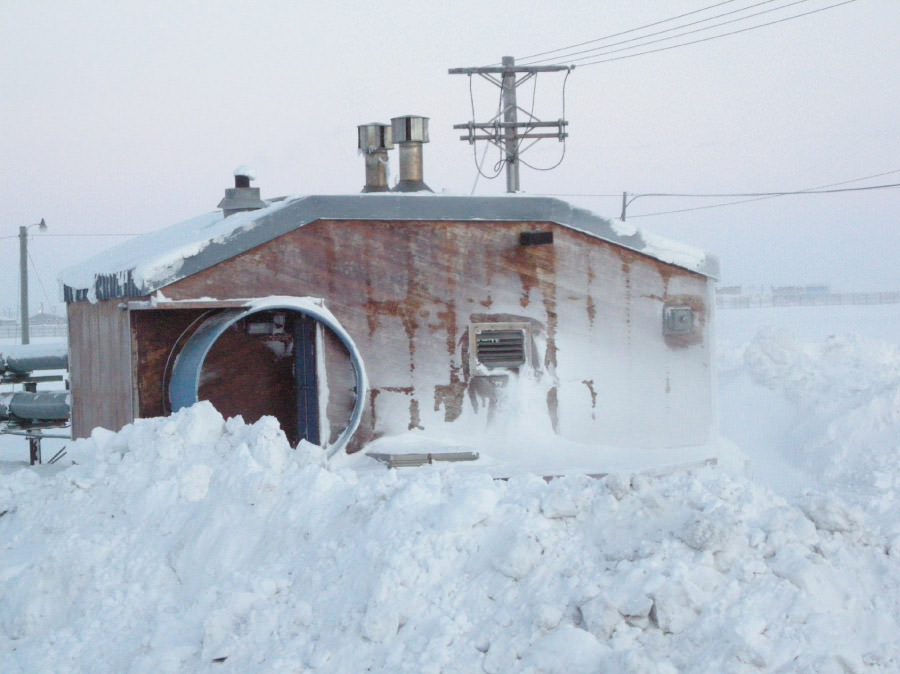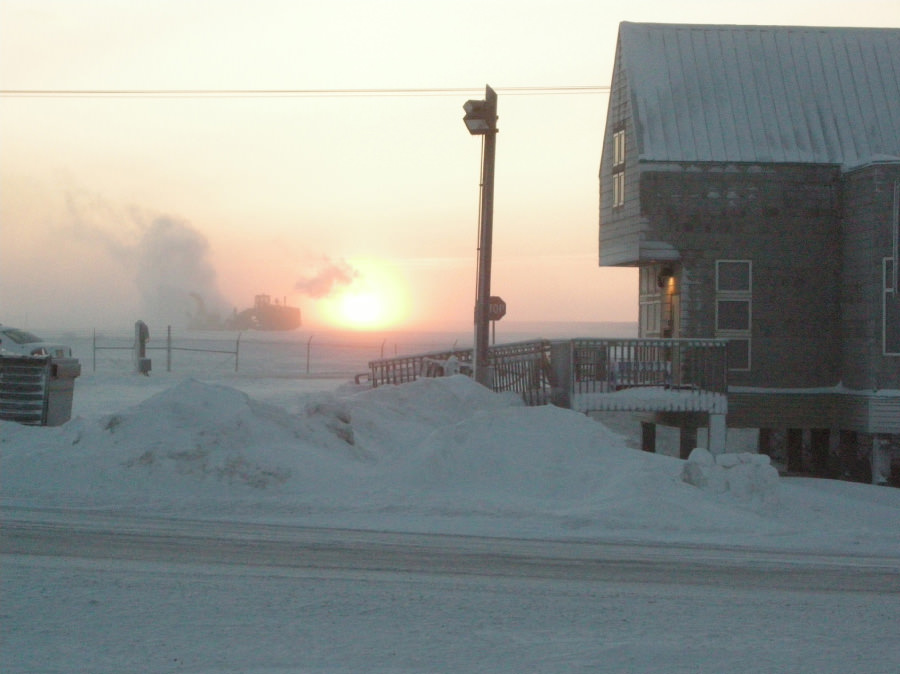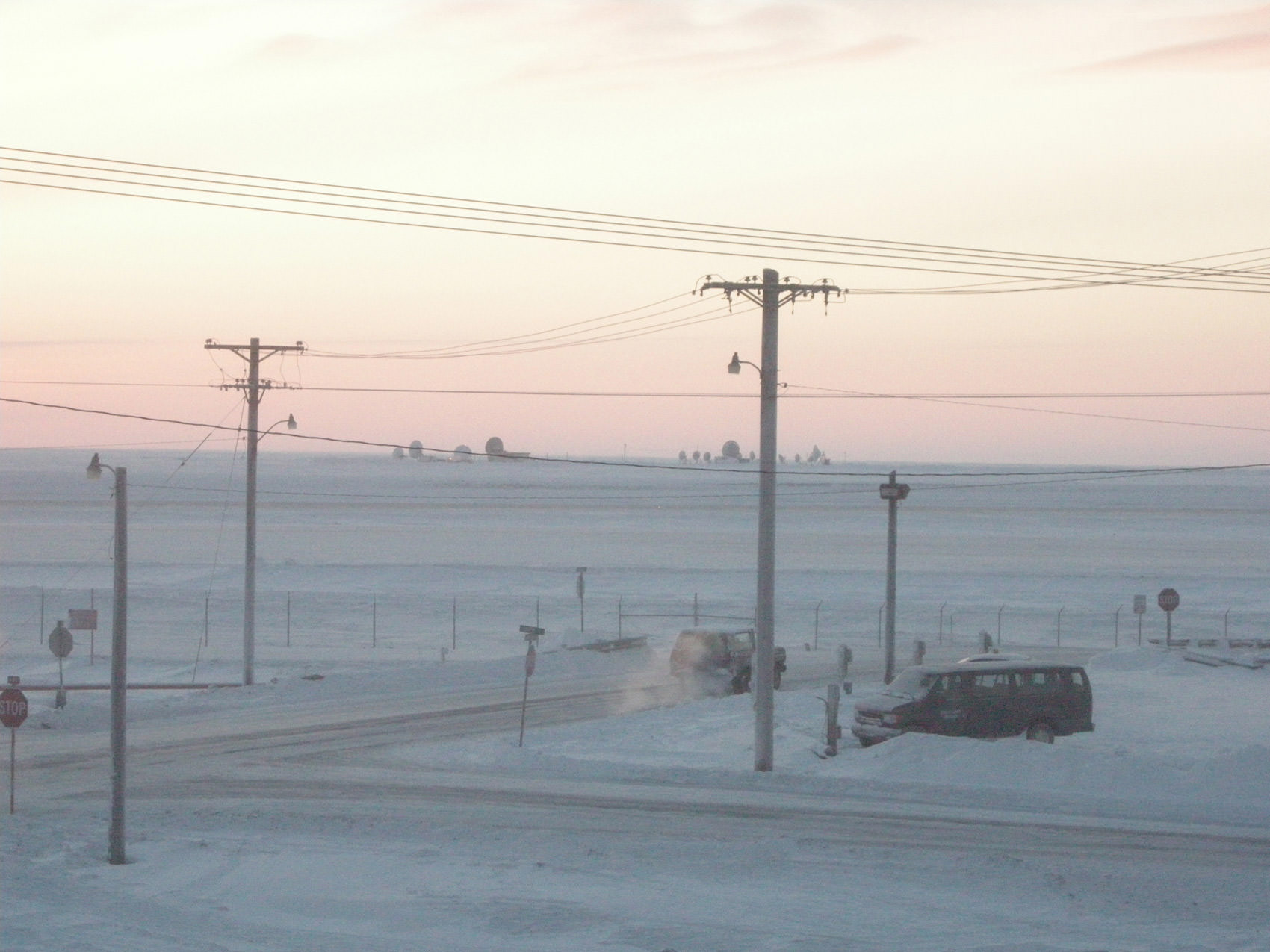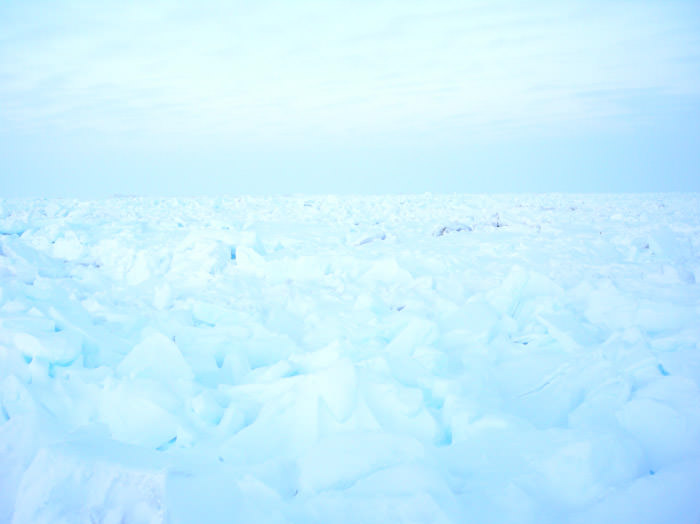-

Apocalypse or Eden?
Text: Leena Cho & Matthew Jull
All photos by Leena Cho & Matthew Jull in Barrow, Alaska.
-


The transformation occurring in the Arctic is a highly insidious, slow-moving shift caused by a progressive modification of global temperatures. Such changes in the arctic implicate fundamental re-configurations not only at a local scale but that of the continental and geologic. For instance, the rise of sea levels due to melting ice caps and glaciers; the re-orientation of global weather patterns; the release of methane gas due to thawing permafrost; receding coastlines; and extraordinary migration and extinction of species are only a few examples of the changes that have already begun accelerating. The chronic and profound nature of this change is beyond the parameters of human control. Accordingly, we are faced with fear, uncertainty, and awe of the unknown – perhaps even a return to something resembling the Middle Ages – all permeate through the deep soils of our political, economic, cultural, and spiritual conscience. The significance of human influence upon the earth’s ecosystem in recent centuries has further constituted a new geological era for its lithosphere: the Anthropocene. Combined with insatiable technological advancement and mystical prophesies, the world we live in has become a site of speculation about planetary apocalypse, where ordinary lives collide with ever-increasing dimensions of natural forces and the ghostly traces of our own artifacts.
-

-
Yet perhaps one man’s apocalypse is another man’s Eden. As one person preparing for doomsday said: “When (sh)it hits the fan, my family’s plan is not to survive but to sur-thrive.” For many, the Arctic is the new frontier – a realm of eternal sunsets, magical aurora and untouched landscapes, now finally becoming unlocked from the grip of deep freeze. Polar romanticism and adventures are resurging, as evidenced by rising eco-tourism. And yet no arctic species will profit from the unfrozen north as much as the one causing it to melt: humans. As the tundra retreats northwards, large areas of the Arctic will become suitable for agriculture; plant growth will increase, significantly prompted by early arctic spring; precious minerals such as gold, zinc and iron will be mined; exploration licenses for oil and gas are already being issued across the region; global shipping routes are gravitating towards the melting, navigable Arctic Ocean; and this consequence of climate change will even allow more hydrocarbons to be extracted and burned. To this end, the “cold rush” of the twenty-first century is on its way to maturation, creating an unprecedented new stratum of opportunities, wealth and human experience.
To an apocalyptic disciple, this arctic paradox – death and re-birth, the misery and the ecstasy of the north – could be one of the obvious symptoms of the end of the world. Forget the Middle Eastern conflict: the Polar War involving eight arctic states might be nearing. The latitude of the Arctic Circle (66° 33′ 44″) might be the new contested border for immigration and patrol. Regardless of where one stands, the transformation of the north is one that is radical and irreversible. Its fate is a schizophrenic uncertainty.

-
Search
-
FIND PRODUCTS
PRODUCT GROUP
- Building Materials
- Building Panels
- Building technology
- Façade
- Fittings
- Heating, Cooling, Ventilation
- Interior
- Roof
- Sanitary facilities
MANUFACTURER
- 3A Composites
- Alape
- Armstrong
- Caparol
- Eternit
- FSB
- Gira
- Hagemeister
- JUNG
- Kaldewei
- Lamberts
- Leicht
- Solarlux
- Steininger Designers
- Stiebel Eltron
- Velux
- Warema
- Wilkhahn
-
Follow Us
Tumblr
New and existing Tumblr users can connect with uncube and share our visual diary.
»Form follows feminine.«
Oscar Niemeyer
Keyboard Shortcuts
- Supermenu
- Skip Articles
- Turn Pages
- Contents


